This is what Dr. Hillel Rubinstein, commander of the D-MARS mission, during which six Israeli researchers were in a facility in the Ramon Crater that simulates a mission to Mars in an interview with the Israel Space Agency in the Ministry of Science, says Dr. Reot Shurk-Abramovich, a geologist and one of the participants in Experiment D - MARS said that the experience was interesting and the staff members, who are professionals in fields with over ten years of experience, worked together in an amazing way
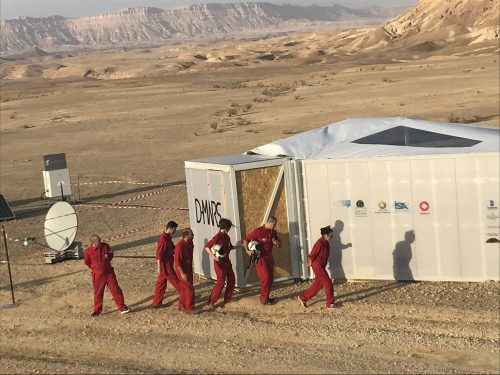
"We felt like we were on a real space mission." This is what Prof. Hillel Rubinstein, the commander of the D-MARS mission, says in an interview with the Hidan website, during which six Israeli researchers were in a facility in the Ramon Crater that simulates a mission to Mars in cooperation with the Israel Space Agency in the Ministry of Science. The interview took place on February 18, right after the researchers, known as "Ranauts", left the facility - the Habitat, where they were closed for the four days of the experiment, and those who left it had to wrap themselves in a space suit.
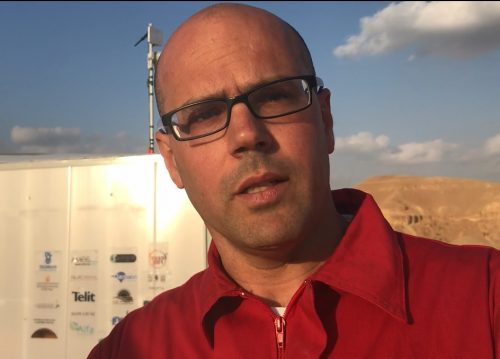
Dr. Hillel Rubinstein. Photo: Avi Blizovsky "We felt like we were on a real mission. We have equipment that simulates space missions. We have a suit that simulates an astronaut suit, the communication is delayed by ten minutes, like in a real mission to Mars, and we have to deal with this matter. Suddenly someone gets sick, or something in the suit of a person outside the building malfunctions. You can't call someone for help, you have to function alone. These are tasks that are easily performed in a normal situation, very difficult when you have a suit and gloves. The helmet was covered with steam and it was impossible to see, technical problems that had to be solved and of course this in addition to the scientific experiments. We prepared the food using a special machine called Genie, which uses dry dishes and returns the liquids to them. In addition, we brought food with us that would be pleasant for us for Shabbat dinner. Nadav Kushnir, one of the team members was responsible for the food, it was excellent food."
"I want to thank the team members. Everyone did an excellent job. And I hope that Israel will continue to dream far away. From a distance, things look different."
Prof. Guy Ron, an expert in nuclear physics from the Hebrew University, explains that: "D-MARS is a unique initiative made up almost entirely of volunteers. It is designed to provide an environment for analog missions - missions in which conditions existing on Mars are simulated in order to introduce new approaches, new processes or new technologies that could potentially be used on Mars. This is an important project, very interesting to live in a closed environment. Mitzpe Ramon is a unique environment and very similar to Mars, both the surface, the dryness, the distance, everything is similar to Mars, but in addition, unlike the other projects that simulate Mars, the D-MARS project devotes the same weight to experiments as well as to the accessibility of science. Get students interested in science and STEM (science, technology, math and engineering).

Dr. Reot Sorek Abramovich, founder of the Israeli Mars Association and lecturer in astrobiology at the International Space University was the scientific officer responsible for collecting the soil samples for the experiments said that the environment lacks the famous red color of Mars due to the lack of oxidized iron (rust) and other minerals in the area such as basalt and clay very similar to those on Mars. The temperature changes are similar to those measured in some places on Mars.
"The bulky suit and gloves did not allow me to collect samples as easily as I wanted. I believe that in a real mission technology could be used to collect the samples and the human geologist would test them in the lab. In any case, the experiment greatly promotes research in Israel."
Sorek pointed to the task board where you could see what everyone was doing every hour. "We had to measure everything that was happening in the habitat itself and in some cases we also sent people out to EVA to make measurements. "Just for example because it rained the ground beneath us was washed away and the building leans slightly at an angle."
Everything was planned but a very high level of improvisation was required. All the people here are at least ten years in their profession, whether it is in science, whether in architecture, even in music. It's a different quality of work, very helpful to do teamwork. Come on, to Mars.
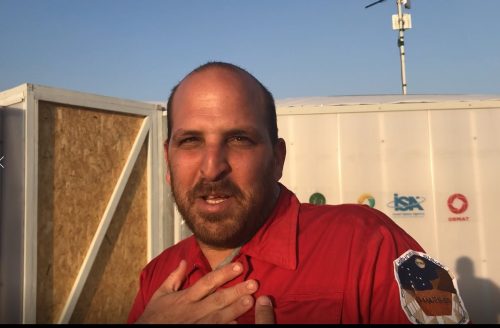
Dr. Nadav Kushnir, social work student and tour guide: "My role in the team was to oversee the health of the team, the food and the psychological experiment. I deal a lot in extreme situations with people, I wasn't really surprised, but it clarified a lot of things for me related to the gap between theory and practice, especially in the operation of the systems.
"I was the medic, we tested devices that could be used in a remote mission, to be in contact with the doctor and the nurse, to give the medical person a detailed indication of body parameters such as EKG, blood oxygen level, and more. Although this is a short mission, we learned how the equipment allows an astronaut not to be a doctor by training. We came here to do six scientific experiments, but in the end we also had to screw in screws, maintain the building, operate the toilets, prepare the food and also keep the people feeling good. I am a social worker and that is my job. There is no signature indicating its pulp but it was amazing. There is a wonderful group of people here and it was fun to work together.
"We ate food prepared using the Genie machine, which uses freeze-dried food and returns the liquid to it in a special way. I believe that a large part of the nutrition in a space mission will be dried food, but to maintain the well-being of the astronauts, it will be possible to vary from time to time with "normal" food items.
Alon Shikar, owner of an architectural firm, a lecturer at the Technion and who was responsible for planning and building the habitat and documenting the mission: we had to constantly be calculated and monitor, to know what our electricity consumption is, how much water we consume, how much food we need to take with us to the mission, everything to keep the This "machine" is alive.. Shikar, owner of a private architectural office and the planner of the building "I am an architect but also an urban planner, so it was important to build a building with the ability to connect to other buildings. It is worth noting that four days ago we received this place with nothing and we had to build everything that was found from scratch.
Dr. Hillel Rubinstein (40) - a postdoctoral fellow at Ben Gurion University who studies missions to Mars says: "Israel is a leader in the field of satellites, but here we have created an incubator for technologies for manned exploration of space, and not just for missions near the Earth, the mission commander. "We wanted to prove that the facility is the best for such missions, so that anyone who wants to send a facility to Mars can try it here."
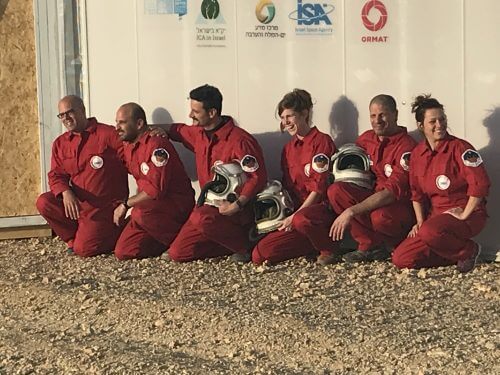
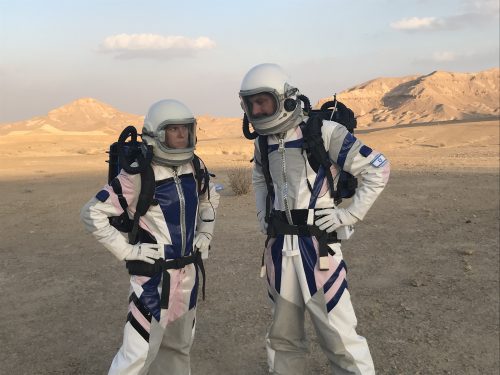
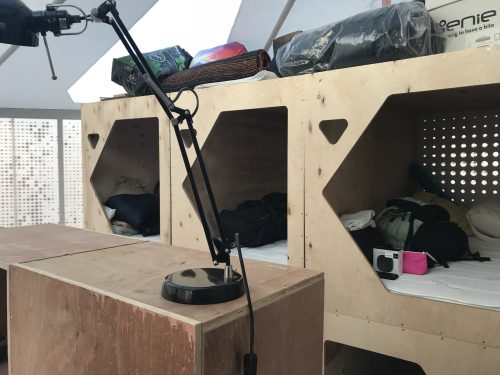
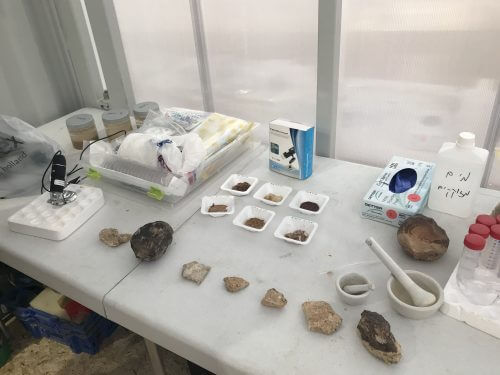
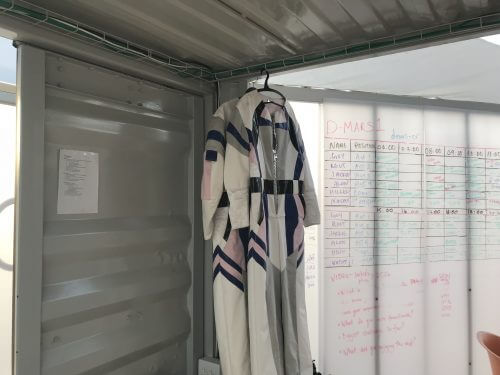
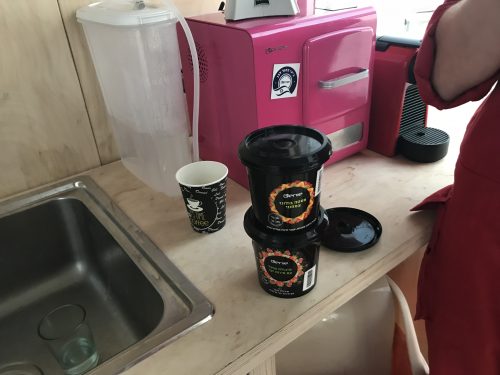
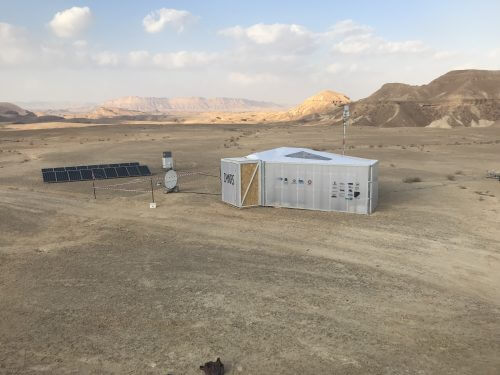
See more on the subject on the science website:
- First Mars simulation in Israel - the first round has ended successfully
- The first simulation in Israel of a mission to Mars has begun
- Amos 7 will provide communication capabilities for the Israeli project to image a mission on Mars
- A first facility of its kind will be built in Israel that simulates a mission on Mars

5 תגובות
Paradoxically, an Israeli team has a good chance of surviving such a mission, thanks to good interpersonal communication. There are also many Israelis who are not bothered by PERSONAL SPACE, etc., which is very important for a mission like this where you will have to live with a team in a very small place and probably completely devoid of privacy.
How are you selected to participate in the project? What are the requirements?
Do the participants undergo certain training?
This simulator is completely unsatisfactory. I propose that in the decisive mission, which will last a year and a half, the hermeneutics will be required to build permanent structures using the natural means that are scattered around and prove their impermeability to the external atmosphere, establish greenhouses and succeed in growing in them (by means of fertilized soil) enough peas and parsley for permanent consumption until the end of the mission and produce a sufficient amount of liquid fuel and oxygen to to fill the booster tank that will bring them back home (I think we will be satisfied with 3000 tons). All this, of course, using the space suits and the means they brought with them, or natural treasures they found in the field, and without neglecting the scientific tasks, of course.
Another problem you have to deal with is the gravity of Mars which is 0.38. Remember the way the Apollo pilots walked, they were bouncy. How will it affect the heart, the circulation of the blood, the sweating? Not clear at the moment. These problems can only be studied in space. A simulator must be built to be attached to the space station. This cell will rotate around itself at such a speed that it will simulate the gravity of Mars. It would also be appropriate to cover the inner sides with surface photographs of Mars, of which there are many, and thus create a simulation as close to reality as possible. Why not design and create this simulator in Israel?
Another important subject with which there will be no problems is the biological clock. The day of Mars is almost exactly the same as that of Earth (24 hours and 37 minutes). You will not fly.
Space psychology should also be considered. All the Apollo pilots went through a strong mental upheaval upon their return to Israel. The main reason is that when they were on the moon they saw how small the earth is. The whole perspective changes completely. It will be necessary to learn these lessons and apply them in preparation for the flight to Mars.
In the future, when they perform such a series of experiments, it would be appropriate to perform them also in the small crater and the large crater. There are thousands of craters on Mars and naturally research activities will be carried out in them as well. In these craters, naturally, the distance to the horizon line is short. This can be very confusing. The eye has to get used to it. The best places to practice this are the craters of the Negev.